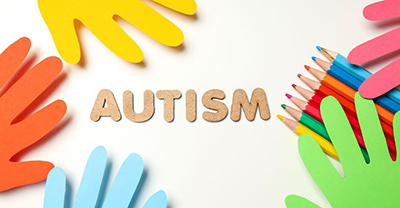BLACKPRESSUSA NEWSWIRE — The U.S. Department of Health and Human Services provided this guide on autism spectrum disorder as part of a series of briefs that offer basic information about common disabilities and tips for educators as they support children with disabilities.
By U.S. Department of Health and Human Services
The U.S. Department of Health and Human Services provided this guide on autism spectrum disorder as part of a series of briefs that offer basic information about common disabilities and tips for educators as they support children with disabilities.
Overview
Autism spectrum disorder (ASD) is a developmental disorder that leads to distinctive social, communication, and behavioral strengths and challenges. A diagnosis of ASD now includes what used to be a few separate autism diagnoses: autistic disorder, pervasive developmental disorder not otherwise specified (PDD-NOS), and Asperger syndrome. ASD is a spectrum disorder, which means that each person with autism has a unique set of strengths and challenges.
According to the Diagnostic and Statistical Manual of Mental Disorders (DSM-5), a guide created by the American Psychiatric Association for diagnosing psychological disorders, people with ASD show:
*Difficulty communicating and interacting with other people
*Highly specific interests and repetitive behaviors
*Symptoms that affect the person’s ability to function in school, at home, and in other areas of life
Symptoms for ASD generally appear by age 2 or 3, and it can be diagnosed as early as 18 months. While research shows that early intervention can lead to positive outcomes later in life, many children are diagnosed at a much later age. The first step to supporting a child showing signs of ASD is identification. Some early signs of ASD can include little to no babbling or noise-making, delayed language development, little to no response to name, or avoiding interactions like eye contact, back-and-forth exchanges, and gesturing.
Support Strategies
Educators can implement a variety of strategies to support a positive experience for children with ASD in their learning environment.
*If the child already has an Individualized Family Service Plan (IFSP) or Individualized Education Program (IEP), coordinate with the intervention team.
*Provide structured routines, transitions, and environments.
Display a daily schedule with pictures of routines and activities.
*Use visual cue cards during transitions and routines to help the child predict next steps.
*Let the child know ahead of time that a transition is coming.
*Gradually increase the time the child is expected to remain on task during learning activities.
*Create, read, and discuss personalized “social stories” or “teaching stories” with the child to help them prepare for or cope with various situations.
*Create verbal and nonverbal communication opportunities.
*Create and use picture cards to cue transitions and routines.
*Create a communication book — with pictures of items or activities the child enjoys or may need to communicate about — that the child can use to communicate with others.
*Offer wait time for the child to verbalize ideas or requests.
*Read familiar, repetitive books and provide opportunities for the child to fill in the blanks.
*Limit the time spent with desired items and activities so that the child is motivated to request them again.
*Support positive social interactions.
*Use first-ten boards and cue cards to support the child while engaging in turn-taking activities.
*Model, prompt, and reinforce appropriate responses to common greetings and interactions.
*Create and repeatedly read social stories with the child. Include pictures along with descriptions of activities, others’ feelings, and directives about how the child can respond in the situation.

